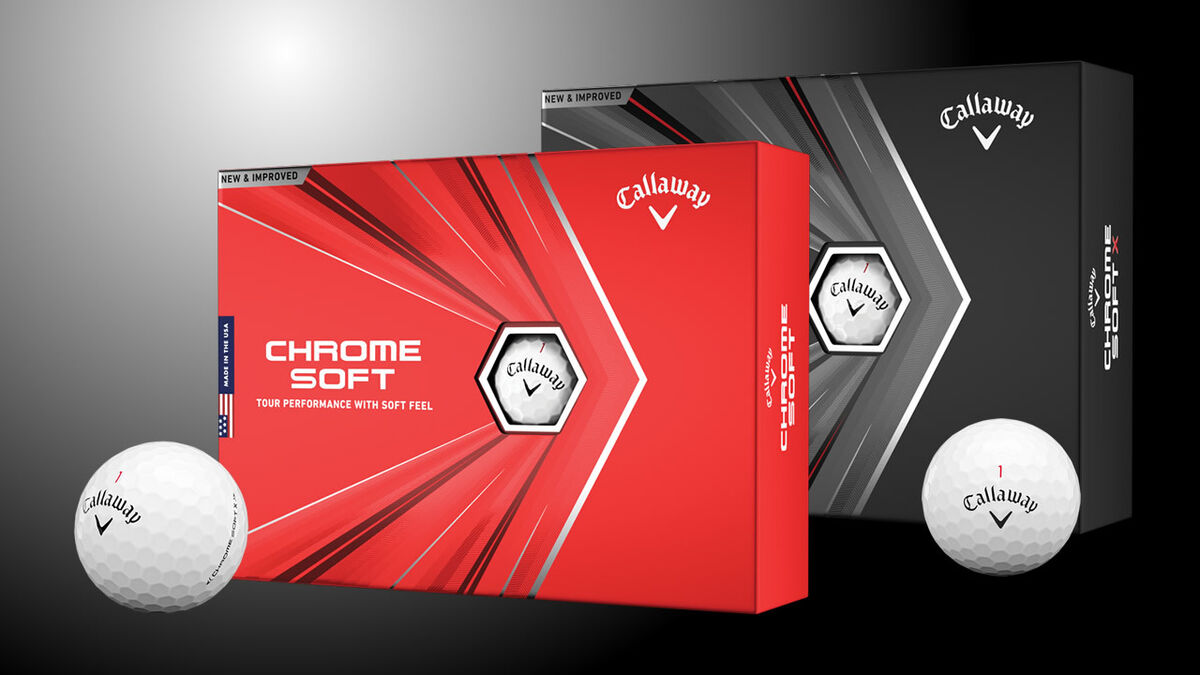Soft vs. Hard Golf Balls: How To Choose the One for You

With so many golf ball options to choose from, a lot of amateurs pick a ball based on how it feels. But do you know the performance differences between soft and hard golf balls? Softer golf balls have lower compression ratings and are ideal for players with slower swing speeds. Harder golf balls require faster swing speeds to create the proper compression. Learn which ball fits your game.
The Difference Between Soft and Hard Golf Balls
Aside from logos and colors, all golf balls look pretty much the same from the outside. On the inside, however, each golf ball is as unique as a snowflake, with layers, cover materials, and compression ratings designed to produce optimal performance for a very specific type of golfer. Here's how soft golf balls compare to their firmer counterparts.
| Factor | Soft | Hard |
| Compression Rating Range | 35-65 | 65-120 |
| Performance Attributes | Higher launch, more spin, less durable | Lower launch, more side spin, more durable |
| Golfer Profile | 90 mph (or less) swing speed, prefers maximum forgiveness, doesn’t shape shots, shops for deals | Swing speed over 90 mph, skilled player who can control spin on the ball, accurate, lower handicap, doesn’t mind spending $50 per dozen |
| Weather | Performs well in all conditions but has an advantage in cold weather | Performs well in all conditions but is harder to compress in colder temperatures |
How to Identify a Soft Golf Ball

You can read everything on the internet about which golf balls are the softest, but until you see, touch, and feel them, you don’t truly know how to identify a softer golf ball.
If you’re standing in the golf ball aisle at your local retailer, the first thing to do is check the back of the box and search for the compression rating. Most manufacturers will note this number which usually falls between 30 and 120. Any number 65 or below is considered a softer golf ball, with 30 being the extreme.
RELATED: The Best Soft Golf Balls For Satisfying Feel
You can actually pop a very low-compression golf ball out of the packaging and give it a squeeze. The cover of a soft golf ball feels noticeably softer in your grip.
From a performance standpoint, you can identify a softer golf ball by how it launches. People with slower swing speeds who play a softer ball enjoy close to an ideal ball flight with their driver and irons. However, players with faster swing speeds will notice how high a soft golf ball launches, also known as ballooning. Soft golf balls produce high amounts of spin, so if your swing speed is too fast for this type of ball, you’ll notice your misses are punished more severely.
Softer golf balls typically fall in the $40 and under price range because of their two and three-piece construction. Often, the manufacturer will also give it away in the product's name.
Examples of soft golf balls include the appropriately named Callaway Supersoft, Srixon Soft Feel, Wilson DUO+, and Titleist Tour Soft.
How to Identify a Hard Golf Ball

Harder golf balls have a higher compression rating, usually 65 and above. The most popular golf ball in the world, the Titleist Pro V1 has a compression of 87. Hard golf balls have a drastically different feel, which you can even feel in your hand. A harder golf ball can have a softer cover, but beyond that, you wouldn’t be able to put a mark into one with your fingernail, for example.
With hard golf balls being intended for players who swing faster, players ill-fit for a firmer ball will quickly notice the performance drop-offs. A slower swing speed player will see how low a hard golf ball launches because they don’t have the swing speed to reach that ideal launch angle. Players with faster swing speeds can hit a firm golf ball with a piercing flight and the appropriate amount of spin to hold greens.
Hard golf balls cost more to produce, and you’ll usually see these models run $40 and up per dozen, with the Pro V1 traditionally around $50 per dozen.
Other examples of hard golf balls: Bridgestone Tour B X, Callaway Chrome Soft X, and TaylorMade TP5x.
Get Fit for Your Golf Balls
You know that being properly fit for your golf clubs gives you an advantage over buying a set off of the rack. From the head to the shaft flex, your investment should fit your swing properly. But what about golf balls? It might sound odd, but you should be fit for your golf ball at your local golf retailer the same way you should get fit for clubs.
Perhaps your swing speed isn’t what you think it is, or you’re having a difficult time holding greens. Whether soft or hard, you should know which golf ball gives you the best performance on the course.
RELATED: The Best Golf Balls For Every Golfer
Let Them Fly
Researching golf balls might seem tedious, but actually getting out and testing them is half the fun. Whether you get a golf ball fitting or want to DIY it, find yourself a ball that performs well for your game, no matter the brand name, and never look back.